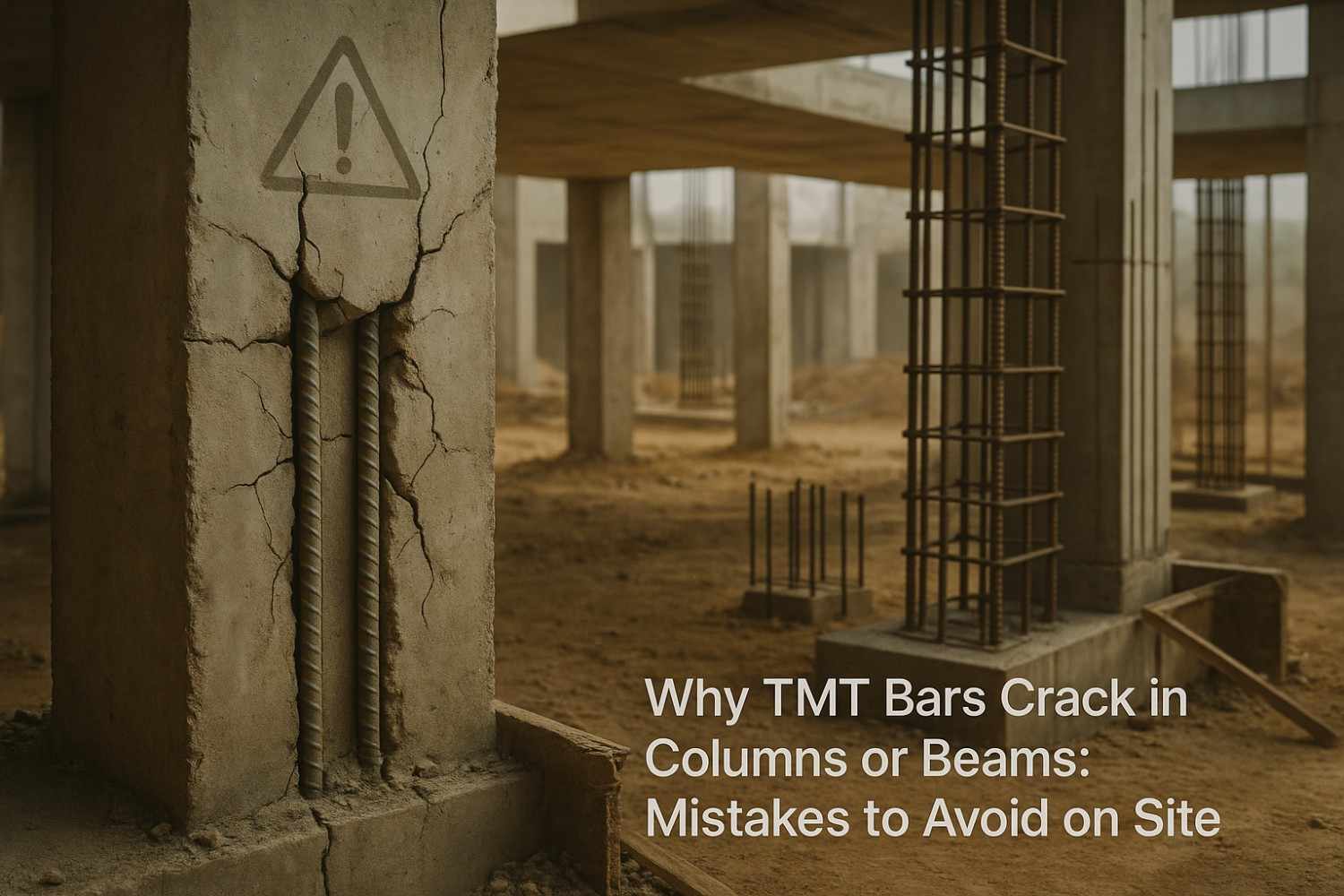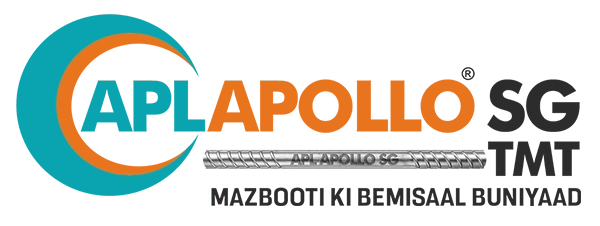
In any reinforced concrete (RCC) structure, TMT bars are the unsung heroes-absorbing tensile stress, providing ductility, and holding everything together. Yet, even the strongest TMT bars like those from APL Apollo SG can show signs of cracking under poor handling or construction site errors. These cracks are not due to the quality of the bar itself, but due to avoidable mistakes during execution.
Let’s explore the most common on-site mistakes that can cause TMT bars to crack-and how you can avoid them in your next project.
- Improper Bending Practices
One of the most frequent reasons for TMT bar cracks is bending at sharp angles or without proper tools. Many workers still use manual hammers to bend the bars rather than a proper bar bending machine. This puts immense localized stress on the outer surface, often exceeding the yield limit.
✅ Use only bar bending machines
✅ Follow correct bending radii per IS codes
✅ Never rebend a bar without heating (which is usually not recommended)
🟩 In our recent blog – Binding Wire Ensures Proper Cage Formation – we emphasized how precision in bending and tying creates a durable rebar cage. The same principle applies here.
- Welding Without Pre-Heating
While welding TMT bars is rare and should be avoided unless absolutely necessary, many sites still practice it. Welding without pre-heating the bar or using inappropriate MS Welding Rods can cause micro-cracks and loss of ductility.
A safer alternative is mechanical splicing. But if welding is essential:
✅ Use proper electrodes like APL Apollo SG Welding Rods
✅ Preheat bars before welding
✅ Cool bars slowly to avoid thermal stress
- Corrosion Due to Poor Storage
Moisture and rust can significantly reduce the tensile strength of TMT bars, making them more prone to cracking. In a real-life project in Jaipur, a contractor stored SG TMT Bars directly on wet soil. Within a week, surface rust had formed, requiring costly brushing and re-coating.
✅ Always store bars on a raised wooden platform
✅ Cover bars with waterproof tarpaulin
✅ Use them in FIFO (first-in, first-out) order
- Using Substandard Binding Wire
Binding wire plays a crucial role in holding the rebar cage in shape during concreting. If weak or rusty wire is used, the cage may shift or collapse during vibration, causing bending and eventually stress cracks in TMT bars.
Choose only tested and uniform MS Binding Wire like those offered by APL Apollo SG.
Also read: The Role of MS Binding Wire in RCC Structures – Small but Mighty
- Pouring Concrete Without Proper Spacers
Another frequent site error is pouring concrete without spacers or cover blocks, which causes the bars to be too close to the formwork or exposed on the surface. This results in:
- Insufficient concrete cover
- Cracking due to thermal shock
- Long-term corrosion
✅ Always use plastic or concrete cover blocks
✅ Maintain minimum 25mm clear cover as per IS456
- Overlapping Without Lapping Length Standards
When bars need to be extended, improper overlapping (lapping) without following standard lengths leads to weak joints. These are often the first points where cracks develop under load.
✅ Lapping length for Fe 500D and Fe 550D should be at least 50x the diameter of bar
✅ Use staggered laps for better strength distribution
💡 Tip: APL Apollo SG TMT Bars come in standard 12m lengths to minimize overlaps on site.
Conclusion: Strength Begins with On-Site Discipline
Even the best TMT bars for construction can fail if mishandled. Whether you’re building a residential home or a multi-storey commercial tower, these practices will ensure you’re getting the full benefit of SG TMT’s superior strength, ductility, and corrosion resistance.
Choose APL Apollo SG TMT Bars not just for the brand-but for the consistent performance you can trust.
🔗 You May Also Like to Read:




Pingback: Rising TMT Bar Prices in 2025: What It Means for Builders & Dealers
Pingback: Integrated Performance of TMT Bars: Strength, Ductility, Fire & Cost Analysis